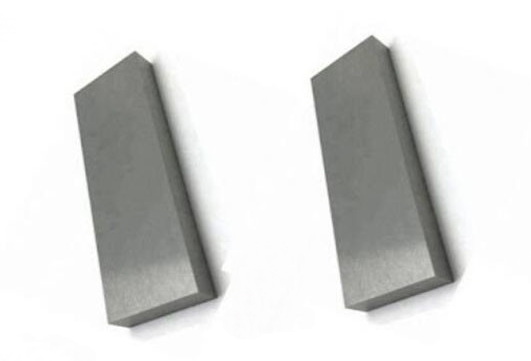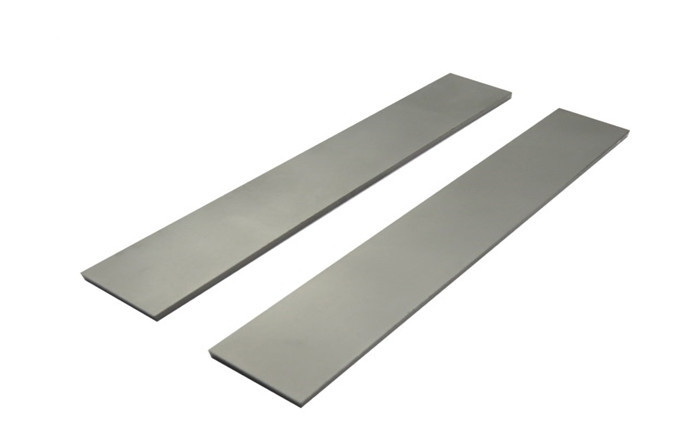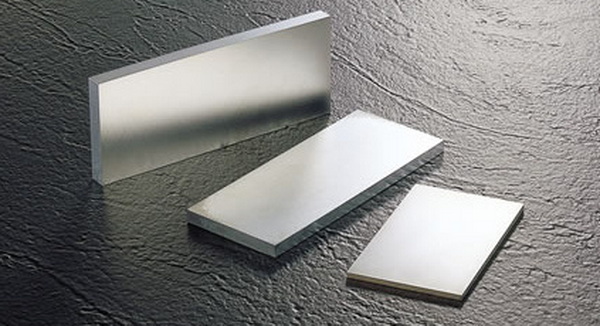Content Menu
● Introduction
● Key Benefits of Tungsten Carbide Square Bars
>> Durability and Wear Resistance
>> Versatility in Applications
● Understanding Tungsten Carbide Properties
>> Composition and Structure
>> Performance Characteristics
● Choosing the Right Tungsten Carbide Grade
>> Overview of Different Grades
>> Factors to Consider When Selecting a Grade
● Best Practices for Machining Tungsten Carbide
>> Tools and Techniques
>> Safety Considerations
● Conclusion
● Related Questions
>> 1. What are the common applications of tungsten carbide square bars?
>> 2. How does tungsten carbide compare to other materials in terms of hardness?
>> 3. What safety precautions should be taken when machining tungsten carbide?
>> 4. How can I extend the life of tungsten carbide tools?
>> 5. What factors influence the choice of tungsten carbide grade for machining?
Introduction
Tungsten carbide is a remarkable material known for its exceptional hardness and durability, making it a preferred choice in various industrial applications. Among its many forms, the tungsten carbide square bar stands out due to its versatility and effectiveness in machining processes. This article delves into the best practices for machining tungsten carbide, ensuring optimal performance and longevity of tools and components.

Key Benefits of Tungsten Carbide Square Bars
Durability and Wear Resistance
Tungsten carbide square bars are renowned for their incredible hardness, which is second only to diamond. This property allows them to withstand significant wear and tear, making them ideal for high-performance applications. The durability of tungsten carbide means that tools made from this material can maintain their cutting edges longer than those made from traditional materials, reducing downtime and increasing productivity.
Versatility in Applications
Tungsten carbide square bars are used across various industries, including aerospace, automotive, and manufacturing. Their ability to be machined into precise shapes and sizes makes them suitable for a wide range of applications, from cutting tools to wear parts. This versatility is a significant advantage, allowing manufacturers to utilize tungsten carbide in diverse projects.
Understanding Tungsten Carbide Properties
Composition and Structure
Tungsten carbide is a composite material made from tungsten and carbon atoms. The combination of these elements results in a dense, hard material that exhibits excellent mechanical properties. The typical composition consists of approximately 80% tungsten and 20% carbon, although variations exist depending on the desired characteristics.
Performance Characteristics
Tungsten carbide's performance is characterized by its thermal stability, corrosion resistance, and hardness. These properties make it suitable for high-speed machining and applications where heat and friction are prevalent. Additionally, tungsten carbide maintains its strength at elevated temperatures, making it ideal for demanding environments.
Choosing the Right Tungsten Carbide Grade
Overview of Different Grades
Tungsten carbide is available in various grades, each tailored for specific applications. Common grades include:
- Cobalt-Bonded Tungsten Carbide: This grade is known for its toughness and is often used in applications requiring high impact resistance.
- Nickel-Bonded Tungsten Carbide: This variant offers superior corrosion resistance and is ideal for applications in harsh environments.
- Titanium-Bonded Tungsten Carbide: Known for its hardness, this grade is suitable for high-speed machining.
Factors to Consider When Selecting a Grade
When selecting a tungsten carbide grade, several factors must be considered:
- Application Requirements: Understand the specific demands of the application, including the type of material being machined and the desired finish.
- Machining Conditions: Consider the machining environment, including temperature and humidity, which can affect tool performance.
- Cost Considerations: While higher-grade tungsten carbide may offer better performance, it is essential to balance cost with the expected benefits.

Best Practices for Machining Tungsten Carbide
Tools and Techniques
Machining tungsten carbide requires specialized tools and techniques to achieve optimal results. Here are some best practices:
- Use the Right Cutting Tools: Tungsten carbide tools should be used for machining tungsten carbide. These tools are designed to withstand the material's hardness and provide a clean cut.
- Select Appropriate Cutting Speeds: The cutting speed is crucial when machining tungsten carbide. Generally, lower speeds are recommended to prevent overheating and tool wear. A speed of 50 to 100 surface feet per minute is often ideal.
- Utilize Proper Feed Rates: Feed rates should be adjusted based on the tool and material being machined. A slower feed rate can help reduce heat generation and improve tool life.
Safety Considerations
Safety is paramount when machining tungsten carbide. Here are some essential safety measures:
- Wear Protective Gear: Operators should wear safety glasses, gloves, and masks to protect against dust and debris generated during machining.
- Ensure Proper Ventilation: Adequate ventilation is necessary to minimize exposure to harmful dust particles.
- Follow Equipment Guidelines: Always adhere to the manufacturer's guidelines for operating machinery and tools.
Conclusion
Machining tungsten carbide, particularly in the form of square bars, requires a thorough understanding of the material's properties and the best practices for working with it. By selecting the right tools, techniques, and safety measures, manufacturers can achieve optimal results and extend the life of their tungsten carbide components. The versatility and durability of tungsten carbide make it an invaluable material in modern manufacturing, and adhering to these best practices will ensure its effective use.

Related Questions
1. What are the common applications of tungsten carbide square bars?
Tungsten carbide square bars are commonly used in cutting tools, wear parts, and industrial machinery. Their hardness and durability make them ideal for applications requiring high precision and resistance to wear.
2. How does tungsten carbide compare to other materials in terms of hardness?
Tungsten carbide is one of the hardest materials available, second only to diamond. It significantly outperforms traditional materials like steel and aluminum in terms of wear resistance and longevity.
3. What safety precautions should be taken when machining tungsten carbide?
When machining tungsten carbide, operators should wear protective gear, ensure proper ventilation, and follow equipment guidelines to minimize exposure to harmful dust and debris.
4. How can I extend the life of tungsten carbide tools?
To extend the life of tungsten carbide tools, use the appropriate cutting speeds and feed rates, maintain proper cooling, and regularly inspect tools for wear and damage.
5. What factors influence the choice of tungsten carbide grade for machining?
Factors influencing the choice of tungsten carbide grade include application requirements, machining conditions, and cost considerations. Understanding these factors can help in selecting the most suitable grade for specific projects.
















